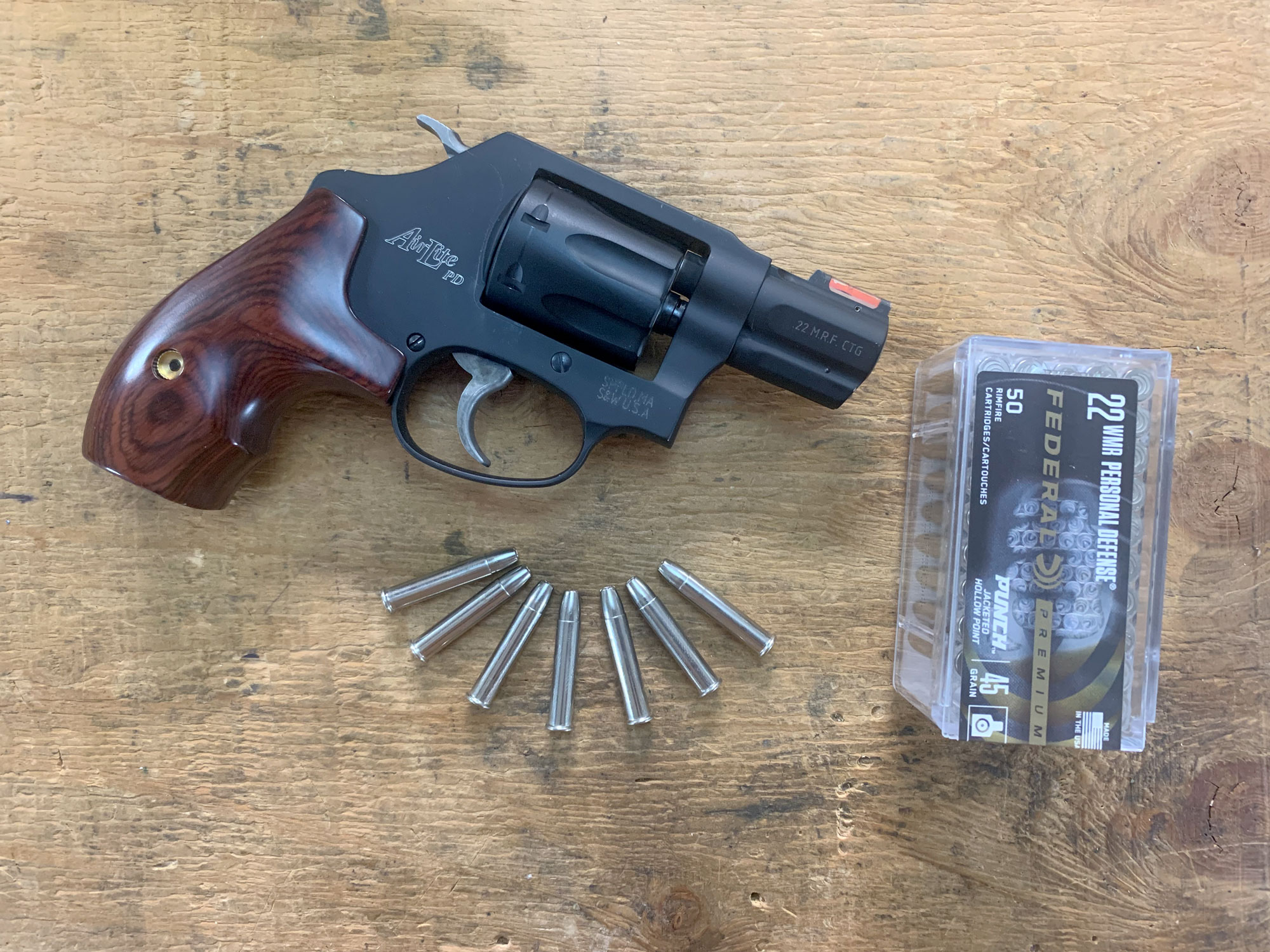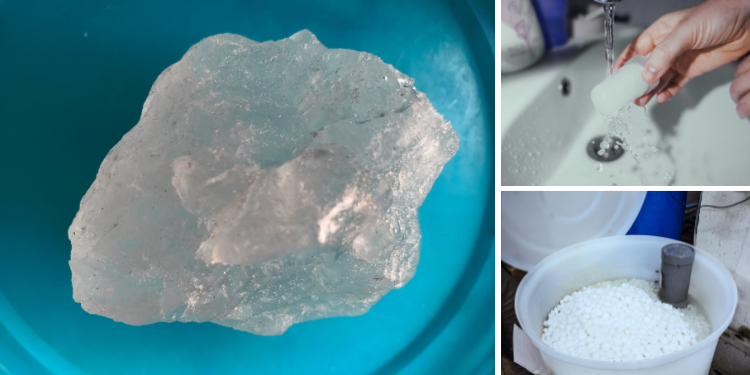How to Skin a Deer

If you ask a dozen hunters how to skin a deer, you’ll find that every one of them does something slightly different. While that may be frustrating for newer hunters, it should also be reassuring: There’s no one right way or right order to skin a deer. As long as you follow the general techniques and handy tips outlined below, you’ll be able to skin a deer in no time.
Once you do get the hang of it, skinning a deer is quick and easy. Butchering and packaging a deer can take all afternoon but “if it takes me 10 minutes to skin a deer,” says Cheyne Matzenbacher, a one-time deer processor and current deer outreach specialist for the National Deer Association, “that’s a long time.”
Table of Contents
Read through the whole article or click on a topic below to jump ahead.
Equipment for Skinning a Deer
Although there are lots of tools and setups that can make skinning a deer much easier, the only thing you really need is a sharp knife. The best skinning knives are typically handy enough for maneuvering but durable enough for joint work. There’s nothing wrong with using a small folding skinning knife in the backcountry or a longer filet knife. Just don’t use a dull knife — it’s dangerous and takes longer to finish the job.
Required Gear
Optional Gear
Prepare Your Deer for Skinning
Before you can skin your deer, you need to gut or field dress your deer, which involves removing the internal organs from the chest and abdominal cavities. Once your deer is gutted, you’ll ideally want to hang it. It’s certainly possible to skin your deer on the ground or the bed of your pickup (I’ve done both many times), and if you plan to do this, you should study up on the gutless method of skinning deer and other big game. This process is preferred by backcountry hunters who quarter their deer in the field, slip the meat into game bags, and pack it back to camp or their trucks.
But for most whitetail hunters and Western hunters who hunt close to home, it’s easier and faster to skin a deer that’s hanging. The meat will also stay cleaner if it’s hanging instead of touching dirt, bacteria, and deer hair on, say, your tailgate. There are a dozen methods for hanging a deer, and they all depend on your location and the tools available to you.
- If you are in the field, consider getting a hoist that fits into the receiver hitch of your vehicle. These contraptions are relatively inexpensive considering they can help a solo hunter lift a deer into the truck and create a mobile work station for skinning and quartering work. Matzenbacher usually hunts by himself and uses his to load deer or skin his deer right where he killed it. Hitch hoists have the added benefit of helping hunters like Matzenbacher stay compliant with CWD-carcass transportation laws. (If you’re not allowed to cross county or state lines with bone-in meat, spinal columns, and heads, you’ll need to skin and quarter your deer before hitting the road.)
- If you’re in the field or back at camp, you can use rope (best combined with a block and tackle) to hoist a deer into a tree, onto a meat pole, or into barn rafters.
- If you want to create a dedicated skinning shed with access to a generator or electricity, consider getting an electric cable hoist, which does the heavy lifting for you, allows you to easily adjust the height of the deer as you work, and can even help you pull the skin off your deer (more on this in a minute).
Should You Hang Deer Head Up or Head Down?
Deer hunters are divided on this question. You can skin a deer that’s hanging head up or head down, but there are advantages to each method. When Matzenbacher worked as a deer processor for a season, he and his coworkers would hang deer by the head or neck to skin the animal, then flip it to hang head-down for butchering.
“Think about how a deer jumps over a fence: His legs are folded up against his body. Let gravity help you, and let the natural way a deer is going to fold up help you skin it,” says Matzenbacher. “Don’t fight it.”
Pros and Cons of Hanging a Deer Head Up
- Easier to gut the deer if you’re doing it once it’s hanging because the entrails fall out more easily
- Easier to pull the hide over the shoulders and past the forelegs
- If you shoot a nice buck and plan to get it mounted, don’t hang it by the neck — this will damage the cape. You can, however, hang it by the antlers (avoid doing this in January or as deer approach shedding season — you don’t want to pop half the rack off).
Pros and Cons of Hanging a Deer Head Down
- Slightly more work to skin the forelegs and shoulders
- Already hanging by the achilles tendons so butchering becomes much easier
General Tips for Skinning a Deer
- If it’s hot out, skin your deer fast. Work quickly to get the hide off of your deer, then hang the meat in the shade or a walk-in cooler if possible. Removing the hide quickly allows the meat to cool and allows air to circulate around it; both prevent spoilage.
- If it’s cold out, skin your deer while it’s still warm. Skinning a frozen deer is a pain and even dangerous: It’s hard to remove the skin, your hands will go numb, and it becomes easy to cut yourself. Instead, remove the hide while the deer is still warm and the hide is pliable. It will go much faster, your hands will stay warm while you work, and you’ll reduce the risk of a clumsy or errant knife stroke.
- Avoid cutting deer hair as much as possible. Cutting deer hair dulls your knife and it also gets hair on your meat. Apart from the circular cuts you make around each leg, all your cuts and knife work should be done with the blade of the knife facing parallel to, or away from, the deer meat. In other words, slip the knife tip under the deer skin and cut out. If you’re slicing through the hide, make those cuts from underneath the skin.
- Put down the knife and pull the hide when possible. Once you skin the hide away from the legs and you’re working on the torso, yank on the hide and drag it toward the ground, or hold it as someone uses the electric cable hoist to pull the deer up while you yank down. The hide on a warm deer pulls off like a sweatshirt.
- If you accidentally cut a hole in the hide, use it as a handhold. In fact, I deliberately cut holes in my deer hide as it falls away so I have better leverage to yank it toward the ground, particularly around the hindquarters and torso. (Don’t do this if you plan to save the hide for tanning or if you’re getting your buck mounted; a good taxidermist can fix small cuts, but you don’t want to unnecessarily put holes in a hide you plan to keep.)
- Do not cut off the tarsal glands. “Something I always heard when I was a kid is that you gotta get those tarsal glands out of there or they’ll ruin the meat. Then you’d watch a guy cut the tarsal glands off first thing and butcher his meat with that same knife,” says Matzenbacher. “I don’t want pee and bacteria on my knife, especially to cut the deer up that I’m going to eat.” Instead, Matzenbacher simply avoids touching the tarsal glands altogether. The size of these glands varies with each deer and the time of year, and he either skins them off with the rest of the hide or uses loppers to cut them off with the lower legs.
- Try using loppers, a bone saw, or Sawzall to remove the legs and head. My deer hunting buddies like to use a butcher’s bone saw or reciprocating saw to cut deer legs and vertebrae. I prefer to use my knife since I hunt in the backcountry, too, where there are no hand or power tools (I also don’t like bone dust on my meat). Matzenbacher prefers loppers, which he can keep in his truck along with the hitch hoist. Use whatever tools you have handy to make the easiest, safest cuts.
- When you’re done skinning, don’t rinse or hose your deer. This is another hotly debated topic among hunters, but experts agree that rinsing deer meat at this stage is inadvisable because it encourages bacterial growth. You want to keep deer meat dry. If your deer was gut shot or you punctured the stomach while field dressing, it’s okay to rinse out the rib cage and the tenderloins, which are located beside the internal organs. Once, I even watched an outfitter lightly torch the deer I had just skinned all over to “burn off stray hairs” still on the meat. I also don’t recommend this: All it accomplished was to make my venison smell faintly of torched hair. Stray hairs on the meat will come off with the fascia as you break down your quarters, anyway. The better you get at skinning, the less deer hair you’ll get on the meat and have to pick off later.
How to Skin a Deer, Step by Step
I skin all my deer head-down, so that’s how I’ll walk you through this example. If you want to try the head-up method, the principles are all the same. Just start at the neck and work your way down. If you are planning to shoulder mount your deer, don’t follow all of these instructions; you’ll need to make very careful cuts near the forelegs and chest. These traditional instructions are for does or for bucks you plan to skull cap or Euro mount. Finally, redneck ingenuity abounds when it comes to skinning deer, and if you’re interested in working smarter, not harder, consider the golf-ball trick or skinning your deer with your truck.
1. Cut the hide on all four legs
Make identical circular cuts near the knee joints, circling the thin bone of the lower leg on the side closer to the hoof. (This is the only time you should be cutting down on deer hair. For all the rest of the cuts, insert your knife under the hide and cut parallel to the meat or away from the meat.)
Slip the tip of your knife under the hide inside one hind leg. Applying even pressure, cut up and out in a single smooth motion as you run your blade toward the pelvis until you reach the cut you made while field dressing. Do this on the other hind leg, then start to skin the hide away from the tendons where you’re going to put the gambrel and expose the knees. The idea is to remove just enough hide that you don’t have to skin around the metal of the gambrel once you hang the deer.
2. Hang your deer (optional)
Thread the gambrel through the natural holes you just exposed in the hind legs (between the bone and thick tendon) and hoist your deer. Tie it off at a comfortable height to work on the hindquarters
3. Remove all four lower legs
Note: You can perform this at almost any point in the process. Some hunters prefer to do this before hanging their deer, others do it as needed throughout the process (as pictured). You can also use loppers or a reciprocating saw for this and may want a saw for the hind legs; just take care not to cut the big tendon on the hind legs.
Slightly bend the front legs and cut through the joint. Wiggle the leg to find the weakest point and use your knife blade to cut perpendicularly through the tendons and between the bones until the joint is free. This may seem tricky at first, but it’s simpler than it looks.
4. Cut along the inside of both hind legs
Run your knife between the lower leg cuts and the cut along the abdomen you made while field dressing. Do this on both sides of the inner hindquarters. Combined with the lower leg cuts (or removal) these are the major cuts that will allow you to skin most of your deer.
6. Start skinning the hindquarters
Using your off hand to lift the hide and your knife hand to make cuts parallel to the meat, begin to peel away the hide. Work from the inside of the hind leg around to the outside. Do this on both sides.
7. Remove the tail
Separate the hide at the tail by either running your knife under the hide and pulling it off the tail like yanking off a sock, or cutting the tail off altogether. Use your knife to work between the joints or simply saw it off.
8. Pull the hide down the torso
Now you can begin the easiest part of skinning a deer: letting gravity help you pull the hide off. You may need to raise the deer a little for this part. Once you’ve used your knife to separate the hide from the tail and the inside of the hind legs, set it aside and grab fist-fulls of hide. Using your body weight, pull the hide toward the ground. If the hide doesn’t pull free in places, you can use your knife to help release the hide by slicing the delicate white crackly tissue that connects the skin to the meat. You’ll likely need to do this around the belly area and occasionally along the back
9. Continue to pull on the hide
The hide will start to form a tube as you peel it away and it gets closer to the chest and neck.
10. Cut the hide on the forelegs, or pull the hide over it
Before the hide gets in your way too much and starts to drape over the forelegs, make cuts inside the forelegs similar to the ones you made on the hindlegs, starting near the knee joint and running the blade along the backs of the legs until they reach the body and chest. (If you didn’t remove the lower forelegs before, be sure to do this before you try to pull the hide over it.) You can also just pull the skin over the forelegs by pushing down on the hide between the brisket and front of the cut front legs (see video above). It’s similar to pulling off a sock.
11. Skin the forelegs and shoulders
Continue to work the hide down over the shoulders and forelegs like you’re peeling off a sweatshirt. The cuts you made on the legs will appear and you can use your knife to free the hide.
12. Skin the neck
Once the hide is over the shoulders, use your knife to separate it from the neck. The freed hide will be heavy now and starting to get in your way. Use its weight to your advantage so it pulls the at the hide still connected to the deer.
13. Remove the head at the base of the skull
When you reach the base of the neck, use a saw or your knife to sever the head from the vertebrae. You’ll have to cut through meat and tendons on all sides until you reach the spine. If you’re using a knife, work through the vertebrae like you did with the knee joints, turning the deer’s head a little bit to help free space between the vertebrae. You want to make your cut at the atlas joint, the connection between the head and the first vertebra of the neck and spinal column.
Once you cut through the neckbone the hide should be completely removed from your deer, though still attached to the head. If you need to get your deer tested for CWD or plan to make a European mount, just slice away all that extra hide hanging off the head.
15. Skin the head (optional)
This step is only necessary if you plan to make your own skull mount. Start at the neck and cut away the skin as you did on the rest of the deer, making cuts parallel to the meat and skull until you’ve removed most of the skin. A flathead screwdriver can help free the hide at the base of a buck’s pedicles, which can be the trickiest part to remove. This is a more time consuming process and should be done carefully to avoid injury or scoring the skull with your knife, which can cause cosmetic damage.
Read Next: Best Fixed-Blade Knives
FAQs
No, you don’t have to hang a deer to skin it. I’ve skinned plenty of deer in the back of a pickup, and sometimes that’s your only option if you’re hunting in areas without many trees or access to a barn or meat pole. It’s definitely easier to skin a deer if it’s hanging since gravity helps remove the hide. It’s also easier to keep the meat clean if your deer is hanging when you skin it; skinning a deer on a level surface like a tailgate or outdoor table makes it more likely that you’ll get deer hair and possibly dirt or bacteria on the meat.
The only tool you must have to skin a deer is a reasonably sharp knife. There are plenty of additional tools that make the job easier, and those will depend on where you’re skinning your deer. If you’re working in the field, consider a hitch hoist for your vehicle and a pair of loppers to quickly remove legs. If you have the luxury of a garage, shed, or barn to hang your deer, along with electricity, you might invest in an electric winch and a Sawzall.
How fast you need to skin a deer depends on a few factors, including the temperature outside and your state’s carcass transportation laws. As a general rule, in the right conditions (cool and dry), a deer can hang hide-on for several weeks. (See below for more details.) If it’s hot and humid, skin the deer as fast as you can to help cool the meat and prevent spoilage. If temperatures are near or below freezing, you should skin a deer while the carcass is still warm and the hide is pliable; skinning a frozen deer is both difficult and time consuming. Meanwhile, CWD laws in your state may require you to debone all deer meat before crossing county or state lines. If such regulations apply where you hunt or live, you’re going to need to skin your deer so you can debone it before you hit the road.
A skinned deer can hang for up to a few weeks if it’s stored in the proper conditions. The deer needs to stay cool and dry, such as sheltered outside during the winter or (preferably) inside a walk-in cooler set to a consistent temperature. Experts recommend hanging deer for 7 to 10 days at a temperature between 35 and 45 degrees to allow enzymes to age, or tenderize, the meat. A deer will not age properly if it’s frozen.
Yes, you can age deer meat with the skin on. Opinions on this vary about which method (aging venison with or without the hide) is better. Any meat that’s exposed to air as it ages will develop a dried crust, and the hide can help protect that meat from drying. I once hung a doe, hide-on, in a walk in-cooler with the temperature set to 38 degrees for two weeks. It was surprisingly easy to skin after aging and I lost less meat than when I age completely skinned quarters. But if you let your deer hang for much longer than that (three weeks or more) the meat may over-tenderize and start to come away with the hide, forcing you to work slowly and possibly wasting meat. Still, letting deer meat hang for at least a day or more can help keep it dry, tenderize the venison, and concentrate flavor before butchering.
The best deer skinning knife is a sharp one. The type of knife—skinning, caping, boning, or filet—matters less than its sharpness and the cuts you make. Many hunters and wild game processors prefer different types of knives for different stages of the skinning process: There are skinning knives (usually slim, handy knives with a sturdy blade), flexible filet knives for working around awkward angles or different muscle groups, caping knives for skinning the shoulders and head of a trophy deer, and stout boning knives for separating knee joints. Try several types of knives to find the best deer skinning knife for you.
Final Thoughts on How to Skin a Deer
Remember, there is no single perfect way to skin a deer. Every deer hunter and processor I’ve met does something slightly different, and most swear their way is the best way. Find which tools and techniques work for how you hunt and what kind of facilities you have access to (if any). The only way to truly learn how to skin a deer is, well, to skin a deer. So sharpen your knife and get after it.
Read the full article here








